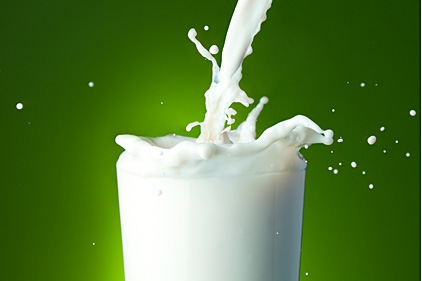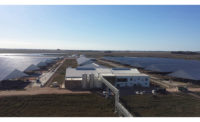The White House released a Biogas Opportunities Roadmaphighlighting the economic and environmental benefits and potential for biogas systems on dairy farms in the United States. According to the Roadmap, biogas systems offer a wide range of potential revenue streams, growing jobs and boosting economic development for communities. The systems work by recycling organic material, including cow manure and food waste, into valuable co-products such as renewable energy, fertilizer, separated nutrients and cow bedding.
To develop the Roadmap, the White House worked with the U.S. Department of Agriculture (USDA), Department of Energy (DOE), Environmental Protection Agency (EPA) and the dairy industry through the Innovation Center for U.S. Dairy, Rosemont, Ill.
The Innovation Center brings together leaders of dairy farmer organizations, cooperatives, processors, manufacturers and brands to foster innovation and help dairy farmers and importers sell more milk and dairy products. Biogas initiatives completed by the Innovation Center helped inform the Roadmap, including 2013 research that identifies a $2.9 billion market potential for anaerobic digester systems that co-digest dairy cow manure and food waste.
“The Biogas Opportunities Roadmap will help stimulate the emerging biogas market in ways that could provide revenue-generating opportunities for dairy farms of all sizes,” says Jim Mulhern, president and CEO of the National Milk Producers Federation, Arlington, Va., which develops and carries out policies that advance the well-being of dairy farmers and the cooperatives they own.
Because the Roadmap strategies are voluntary, not regulatory, “this validates the proactive and voluntary path the industry is already taking to reduce methane emissions, and provides direction for future actions and opportunities,” says Mulhern.
The USDA, DOE and EPA will take these steps to promote the development of biogas systems:
Foster investment in biogas systems.To help overcome barriers to the widespread investment in biogas systems, USDA will lead efforts to better understand and track the performance of anaerobic digesters, seek opportunities to broaden financing options and review federal procurement guidelines.
Strengthen markets for biogas systems and system products.The Roadmap identifies activities that could strengthen the market for biogas systems and system products, including energy and other value-added products. For example, dairy farms of all sizes could enhance their revenues through nitrogen and phosphorus recovery.
Improve communication and coordination.USDA will establish a Biogas Opportunities Roadmap Working Group, including the dairy industry to implement the strategies in the Roadmap, with a goal to identify and prioritize policies and technology opportunities by August 2015.
Promote biogas use through existing agency programs.Leveraging existing programs will provide a way to enhance the use of biogas systems in the United States by ensuring existing criteria for technical and financial assistance considers the benefits of biogas system, leveraging research funding and strengthening programs that support the use of biogas for clean energy, transportation fuel and other bio-based products.
“On dairy farms, digesters can increasingly be part of the solution to manure management challenges and enhance our ability to sustain our farms for the next generation,” says Jim Werkhoven, chairman of Darigold, Inc., Seattle, Wash.
In 2009, the dairy industry established a voluntary goal to reduce its carbon footprint by 25% by 2020.
“Dairy farmers are taking many steps to provide nourishing dairy foods and beverages that are responsibly produced,” says Tom Gallagher, chief executive officer of the Innovation Center for U.S. Dairy. “Biogas systems are one example of many technologies available to the industry today that help us continuously improve our stewardship and contribute to our communities.”


